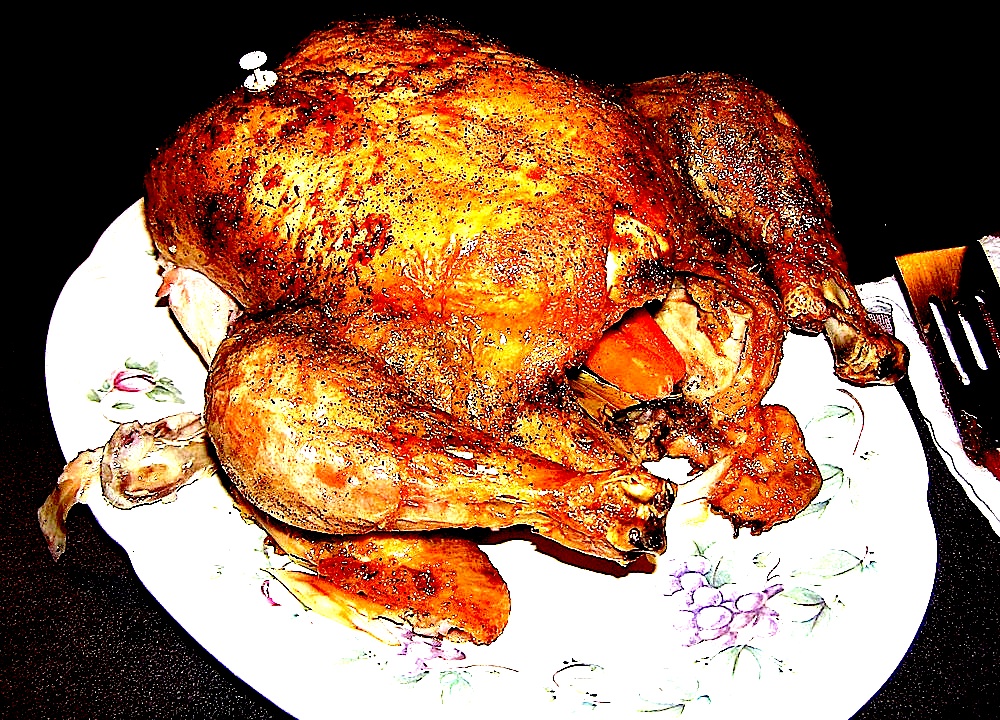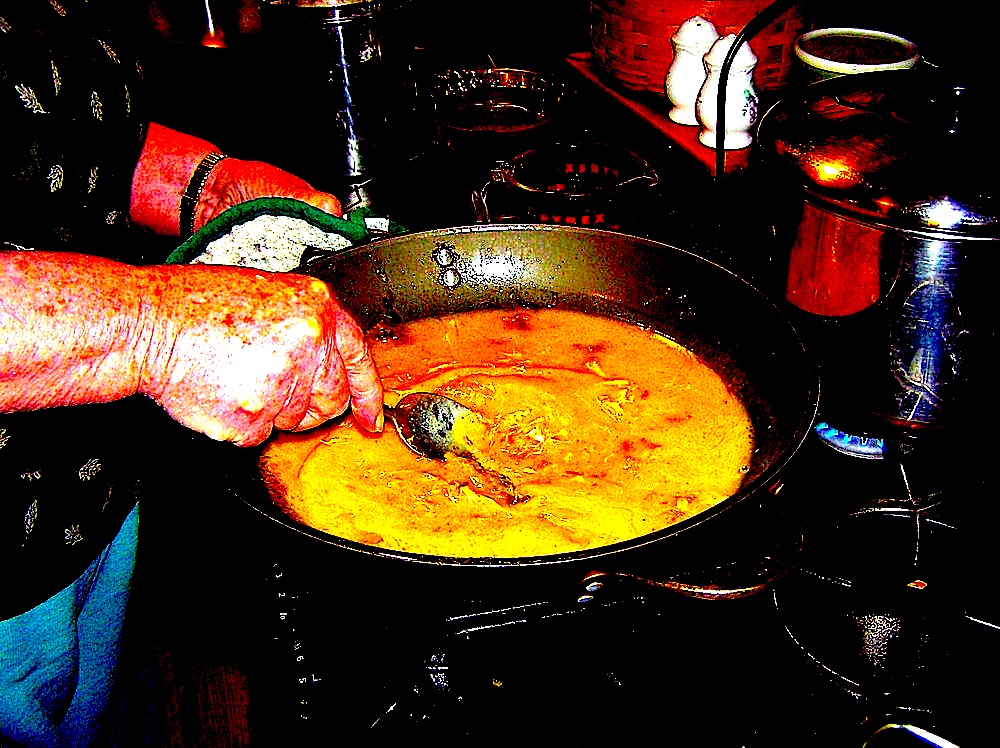
 BY AMY Z. QUINN This past week, Mrs. Quinn Version 1.0, aka my husband’s mother, was in for a visit. This is not a bad thing, as she lives in New York and we don’t get to see her very often and usually on holidays, and well, time with Grandma is an important thing for a little boy. And for me, time with MQ1.0 is valuable on many levels. I like — no, make that love — my mother-in-law, and why not? She’s smart, genuinely funny, adores my son, tells awesome Years Ago stories and has embraced me like a daughter.But the best thing, just between you and me? The woman can cook a roast like nobody’s business and the gravy is always perfect — lump-free and delicious. The same cannot be said of my own. As a newlywed this annoyed me — I mean, who wants to cook a whole Thanksgiving dinner and then have to ask for help with the gravy? Fortunately, I got over myself pretty quickly and realized that she’s been cooking abut 50 years longer than me, so the smart thing to do was stand back, shut up, watch and learn.
BY AMY Z. QUINN This past week, Mrs. Quinn Version 1.0, aka my husband’s mother, was in for a visit. This is not a bad thing, as she lives in New York and we don’t get to see her very often and usually on holidays, and well, time with Grandma is an important thing for a little boy. And for me, time with MQ1.0 is valuable on many levels. I like — no, make that love — my mother-in-law, and why not? She’s smart, genuinely funny, adores my son, tells awesome Years Ago stories and has embraced me like a daughter.But the best thing, just between you and me? The woman can cook a roast like nobody’s business and the gravy is always perfect — lump-free and delicious. The same cannot be said of my own. As a newlywed this annoyed me — I mean, who wants to cook a whole Thanksgiving dinner and then have to ask for help with the gravy? Fortunately, I got over myself pretty quickly and realized that she’s been cooking abut 50 years longer than me, so the smart thing to do was stand back, shut up, watch and learn.
So suffice to say, we weren’t getting through the week without putting something in the oven just so I could have Grandma bust out with some gravy.
Enter the bird: A 7-lb oven roaster I had to settle on at the local Stop ‘n Shop, which had a scandalously small selection of beef roasts. Note to self: Next time, wait until Thursday when the Amish Farmers Market butcher is open.
Anyway, when the goal is a roasted meat gravy, a chicken’s as good as anything else, so long as the “anything else” is a hunka meat with a decent amount of fat. The fat is crucial, because gravy is a science experiment, the reaction of starch and fat when heat is applied. Chef Alton Brown (who looks like Boss Phawker’s dorkier twin brother), talking about thickened sauces in his first book I’m Just Here For the Food , explained it like this:
A roux is an equal mixture of starch (usually from wheat flour) and fat, which are mixed together and cooked. A flavorful liquid is then added and the starch particles, encased in the fat, are free to be distributed in the liquid. With the addition of heat, they swell and burst, thickening the liquid.
Science!
For thickeners, you choose either flour or cornstarch, which determines the cooking method. Flour is usually sprinkled directly into the cooking pan with the fat and fond (aka browned bits o’ goodness) and cooked for a varying length of time, depending on how brown you want the gravy to be. Then hot liquid — the heat is crucial, or hello lumpy — is whisked, and it thickens as it comes to the boil. With cornstarch, you work backward: Deglaze the pan with the liquid first, stirring the fond up from the bottom. Mix the cornstarch with cold water and whisk it into the hot liquid. Let it boil and there you have it.
pan with the liquid first, stirring the fond up from the bottom. Mix the cornstarch with cold water and whisk it into the hot liquid. Let it boil and there you have it.
Easy, right? WRONG — if it was, then so many people wouldn’t settle for crappy canned or jarred gravy, washing all that deliciosity down the drain to save 10 minutes of cooking time.
So into and out of the oven goes the chicken, on a metal roasting pan that can be used on the stovetop. (This is a job for the Super Pan! ) Remove the meat to a plate to rest.
Next, put the hot pan back on the stove, off the heat and sprinkle flour about equal to how much fat there is left in the pan (pour some off if there’s more than about 1/4 cup). Work the flour into the pan liquid with a spoon or whisk, until the lumps are gone, then turn the heat back on.
Cook the roux, stirring constantly, until it begins to take on a caramel color. And here’s one of the places where the old school meets the new because it is at this point where some cooks, usually of a certain age, would add a dab of Gravy Master, Kitchen Bouquet or other color enhancer. Please don’t — and if you do, don’t tell anyone. The fact is, if your meat is cooked properly, you don’t need artificial tint.
Slowly whisk in the chicken stock (or water or vegetable-cooking broth or whichever liquid you’re using), and heat, stirring constantly, until it begins to simmer and thicken. Resist the urge to panic and think the gravy’s going to be too thin, just keep stirring and wait. Like Grandma said: “Look, these things take time. Everybody’s in such a rush these days.”
Taste and adjust your seasonings. You may need to add salt, depending on what kind of liquid you used, and strain the gravy before serving to remove any bits of chicken skin or — heaven forbid! — the errant lump. Depending on which starch you used, the gravy should be slightly creamy-looking (flour) or glossy and smooth (cornstarch).
* Means ‘fun for the mouth’
